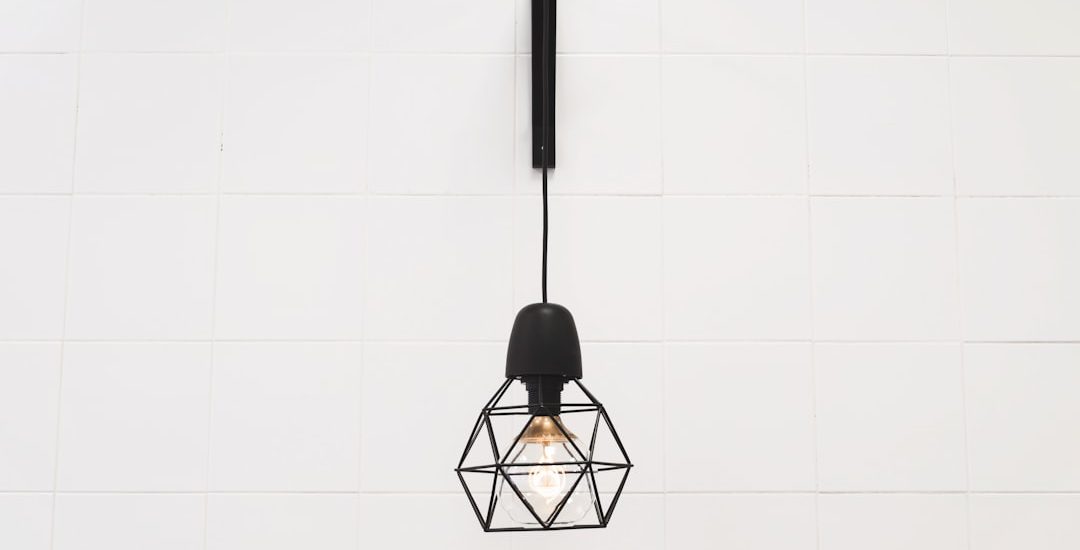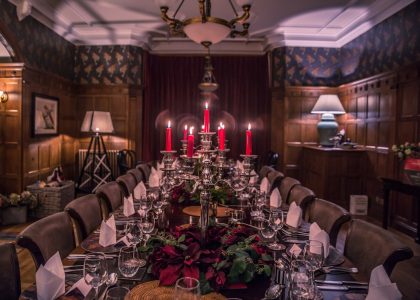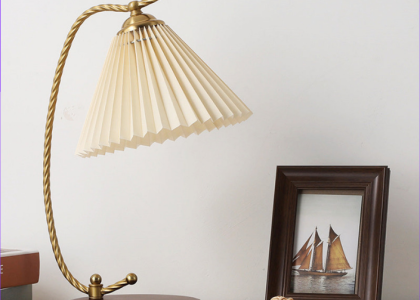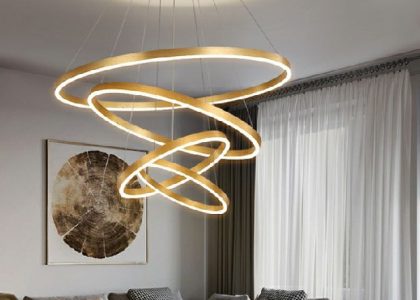Pendant lighting is a type of lighting fixture that hangs from the ceiling, typically suspended by a cord, chain, or metal rod. It is a versatile and stylish option for illuminating various areas of your home. Pendant lighting can add a touch of elegance and sophistication to any space, while also providing functional lighting.
One of the main benefits of using pendant lighting in your home is its ability to create a focal point and add visual interest to a room. Whether you choose a bold and eye-catching pendant or a more subtle and understated design, pendant lighting can instantly elevate the style and ambiance of your space.
There are different types of pendant lighting fixtures to choose from, including mini pendants, multi-light pendants, drum pendants, and linear pendants. Mini pendants are small and compact, making them ideal for smaller spaces or for use in multiples over a kitchen island or dining table. Multi-light pendants feature multiple lights suspended from a single fixture, creating a dramatic effect. Drum pendants have a cylindrical shape and provide diffused lighting, while linear pendants are long and narrow, perfect for illuminating a kitchen counter or dining table.
Enhance Your Living Room with Pendant Lighting: Tips and Ideas
When choosing pendant lighting for your living room, it’s important to consider the overall style and design of the space. If you have a modern or contemporary living room, you may opt for sleek and minimalist pendant designs with clean lines and metallic finishes. On the other hand, if you have a more traditional or eclectic living room, you may choose pendant lighting with ornate details or unique shapes.
Placement and installation are also key factors to consider when using pendant lighting in your living room. The height at which you hang the pendant can greatly impact the overall look and feel of the room. For example, hanging a pendant too low can create a cluttered and cramped appearance, while hanging it too high can make the room feel empty and lacking in visual interest. It’s important to find the right balance and ensure that the pendant is at a height that allows for optimal lighting and aesthetics.
Styling ideas for different living room designs can vary depending on your personal preferences and the overall theme of your space. For a modern living room, you may choose a cluster of mini pendants in different shapes and sizes to create a statement piece. In a more traditional living room, a large and ornate pendant with intricate details can serve as a focal point. Additionally, using pendant lighting to highlight specific areas of the living room, such as a reading nook or artwork, can add depth and dimension to the space.
Pendant Lighting for Your Kitchen: Choosing the Right Fixtures
Proper lighting in the kitchen is essential for both functionality and aesthetics. Pendant lighting can be a great choice for illuminating your kitchen, as it provides focused task lighting while also adding style to the space.
When choosing pendant lighting for your kitchen, it’s important to consider the size and layout of the room. If you have a small kitchen, you may opt for mini pendants or single-light fixtures that won’t overwhelm the space. For larger kitchens or kitchen islands, you can choose larger pendant fixtures or multi-light pendants to create a more dramatic effect.
In terms of style, there are various options to choose from. For a modern kitchen, you may opt for sleek and minimalist pendant designs with clean lines and metallic finishes. Industrial-style pendant lighting with exposed bulbs and metal accents can add a rustic touch to your kitchen decor. Traditional pendant lighting with ornate details and warm finishes can complement a classic or farmhouse-style kitchen.
When it comes to installation, pendant lighting should be hung at a height that allows for optimal task lighting while also maintaining visual balance in the room. It’s important to consider the height of the ceiling, the height of the kitchen island or counter, and any other factors that may affect the placement of the pendant lighting. Consulting with a professional electrician can ensure that the pendant lighting is installed correctly and safely.
Pendant Lighting for Your Dining Room: Creating a Cozy Ambiance
Pendant lighting can greatly enhance the dining experience in your home by creating a cozy and inviting ambiance. The right pendant lighting can set the mood for intimate dinners or lively gatherings with friends and family.
When choosing pendant lighting for your dining room, it’s important to consider the size and shape of your dining table. A general rule of thumb is to choose a pendant that is about one-third to two-thirds the width of your dining table. This ensures that the pendant is proportionate to the table and provides adequate lighting coverage.
In terms of style, there are various options to choose from. For a formal dining room, you may opt for a chandelier-style pendant with multiple lights and elegant details. A more casual or rustic dining room may benefit from a single large pendant with a natural or industrial design. It’s important to choose a pendant that complements the overall style and decor of your dining room.
Installation and placement are key factors to consider when using pendant lighting in your dining room. The pendant should be hung at a height that allows for optimal task lighting while also maintaining visual balance in the room. It should be centered over the dining table and positioned at a height that allows for comfortable conversation without obstructing the view across the table.
Modern Pendant Lighting: Sleek and Stylish Designs for Your Home
Modern pendant lighting is characterized by sleek lines, minimalist designs, and metallic finishes. It is a popular choice for those who prefer a clean and contemporary aesthetic in their home decor.
One of the main characteristics of modern pendant lighting is its simplicity. Modern pendants often feature clean lines and geometric shapes, with minimal embellishments or decorative details. This allows the pendant to blend seamlessly with a variety of interior styles and color schemes.
There are various popular modern pendant lighting designs to choose from. For example, a simple and sleek cone-shaped pendant can add a touch of elegance to a modern kitchen or dining room. A cluster of mini pendants in different shapes and sizes can create a statement piece in a contemporary living room. Linear pendants with adjustable arms can provide task lighting in a home office or study area.
To incorporate modern pendant lighting into your home decor, it’s important to consider the overall style and design of the space. Modern pendant lighting works well in minimalist or Scandinavian-inspired interiors, where clean lines and neutral colors are prominent. It can also be used as a contrast element in more traditional or eclectic spaces, adding a touch of contemporary flair.
Traditional Pendant Lighting: Classic and Timeless Fixtures for Your Space

Traditional pendant lighting is characterized by ornate details, warm finishes, and classic designs. It is a popular choice for those who prefer a timeless and elegant aesthetic in their home decor.
One of the main characteristics of traditional pendant lighting is its attention to detail. Traditional pendants often feature intricate patterns, decorative accents, and rich finishes such as brass or bronze. This allows the pendant to serve as a focal point and add a touch of sophistication to any space.
There are various popular traditional pendant lighting designs to choose from. For example, a large and ornate chandelier-style pendant can create a dramatic effect in a formal dining room or entryway. A lantern-style pendant with glass panels and metal framework can add a vintage touch to a traditional kitchen or living room. A crystal pendant with cascading crystals can bring an element of glamour to a bedroom or dressing area.
To incorporate traditional pendant lighting into your home decor, it’s important to consider the overall style and design of the space. Traditional pendant lighting works well in classic or vintage-inspired interiors, where ornate details and warm finishes are prominent. It can also be used as a contrast element in more modern or minimalist spaces, adding a touch of traditional elegance.
Industrial Pendant Lighting: Adding a Rustic Touch to Your Decor
Industrial pendant lighting is characterized by raw materials, exposed bulbs, and rustic designs. It is a popular choice for those who prefer a vintage and industrial aesthetic in their home decor.
One of the main characteristics of industrial pendant lighting is its rugged and utilitarian look. Industrial pendants often feature metal shades, wire cages, and vintage-inspired finishes such as aged brass or weathered iron. This allows the pendant to add a touch of rustic charm and nostalgia to any space.
There are various popular industrial pendant lighting designs to choose from. For example, a metal dome pendant with an exposed bulb can create a vintage-inspired look in a kitchen or dining room. A wire cage pendant with an Edison bulb can add an industrial touch to a living room or home office. A pulley-style pendant with adjustable arms can provide task lighting in a workshop or garage.
To incorporate industrial pendant lighting into your home decor, it’s important to consider the overall style and design of the space. Industrial pendant lighting works well in loft-style or urban-inspired interiors, where raw materials and vintage elements are prominent. It can also be used as a contrast element in more traditional or eclectic spaces, adding a touch of industrial edge.
Choosing the Right Size Pendant Lighting for Your Room
Choosing the right size of pendant lighting for your room is crucial for achieving the desired aesthetic and functionality. There are several factors to consider when determining the size of pendant lighting, including the size of the room, the height of the ceiling, and the purpose of the lighting.
One important factor to consider is the scale of the pendant lighting in relation to the size of the room. In a small room, choosing a large and bulky pendant can overwhelm the space and make it feel cramped. On the other hand, choosing a small and understated pendant in a large room can make it feel empty and lacking in visual interest. It’s important to find the right balance and choose a pendant that is proportionate to the size of the room.
The height of the ceiling is another important factor to consider when choosing the size of pendant lighting. In rooms with low ceilings, it’s best to choose pendants that are compact and close to the ceiling to avoid creating a cluttered appearance. In rooms with high ceilings, you have more flexibility in choosing larger and more dramatic pendant designs.
The purpose of the lighting is also a key factor to consider when determining the size of pendant lighting. If you are using pendant lighting as task lighting, such as over a kitchen island or dining table, it’s important to choose a pendant that provides adequate lighting coverage. For ambient or decorative lighting, you have more flexibility in choosing pendants that are smaller or more ornate.
Pendant Lighting Installation: DIY or Hire a Professional?
When it comes to pendant lighting installation, you have the option to do it yourself (DIY) or hire a professional electrician. Both options have their pros and cons, and it’s important to consider your skill level, time availability, and budget before making a decision.
One of the main advantages of DIY pendant lighting installation is cost savings. By installing the pendant lighting yourself, you can avoid paying for professional labor costs. Additionally, DIY installation allows you to have full control over the process and ensures that the pendant is installed exactly as you envision.
However, DIY pendant lighting installation also comes with its challenges. It requires basic electrical knowledge and skills, as well as the right tools and equipment. If you are not familiar with electrical work or have never installed lighting fixtures before, it can be a complex and time-consuming process. It’s important to follow safety guidelines and consult with a professional if you have any doubts or concerns.
Hiring a professional electrician for pendant lighting installation has its advantages as well. A professional electrician has the knowledge, skills, and experience to ensure that the pendant lighting is installed correctly and safely. They can also provide valuable advice and recommendations based on your specific needs and preferences.
However, hiring a professional electrician can be more expensive compared to DIY installation. You will need to factor in the cost of labor, which can vary depending on the complexity of the installation and your location. Additionally, scheduling and coordinating with a professional can take time and may require flexibility in your own schedule.
Ultimately, the decision to DIY or hire a professional for pendant lighting installation depends on your comfort level, skill level, and budget. If you have the necessary knowledge and skills, DIY installation can be a rewarding and cost-effective option. However, if you are unsure or have any concerns, it’s best to consult with a professional electrician to ensure a safe and successful installation.
Choosing the Right Bulbs for Your Pendant Lighting: LED, Halogen or Incandescent?
Choosing the right bulbs for your pendant lighting is essential for achieving the desired lighting effect and energy efficiency. There are several types of bulbs to choose from, including LED, halogen, and incandescent bulbs. Each type has its own advantages and considerations.
LED bulbs are a popular choice for pendant lighting due to their energy efficiency and long lifespan. LED bulbs consume less energy compared to halogen or incandescent bulbs, resulting in lower electricity bills. They also have a longer lifespan, which means less frequent bulb replacements. LED bulbs are available in various color temperatures, allowing you to choose between warm or cool lighting depending on your preference.
Halogen bulbs are known for their bright and focused light output, making them ideal for task lighting in pendant fixtures. They provide a crisp and clear light that is similar to natural daylight, making them suitable for areas where detailed tasks are performed, such as kitchen islands or workspaces. However, halogen bulbs consume more energy compared to LED bulbs and have a shorter lifespan.
Incandescent bulbs are the traditional choice for pendant lighting, known for their warm and soft light. They provide a cozy and inviting ambiance, making them suitable for areas where a relaxed and comfortable atmosphere is desired, such as living rooms or bedrooms. However, incandescent bulbs are less energy-efficient compared to LED or halogen bulbs and have a shorter lifespan.
When choosing the right bulbs for your pendant lighting, it’s important to consider factors such as energy efficiency, lifespan, color temperature, and dimmability. LED bulbs are generally the most energy-efficient option and have the longest lifespan. Halogen bulbs provide bright and focused light but consume more energy. Incandescent bulbs provide warm and soft light but are less energy-efficient.
It’s also important to consider the compatibility of the bulbs with your pendant lighting fixtures. Some pendant fixtures may require specific types of bulbs or have limitations on wattage or bulb size. It’s important to consult the manufacturer’s guidelines or consult with a professional if you have any doubts or concerns.
Maintaining and replacing bulbs in your pendant lighting fixtures is also an important consideration. LED bulbs generally require less frequent replacements compared to halogen or incandescent bulbs. It’s important to follow the manufacturer’s recommendations for bulb replacements and ensure that the correct wattage and type of bulb is used. Using the wrong bulb can not only affect the overall aesthetic of the pendant lighting, but it can also potentially damage the fixture. Additionally, regularly cleaning the bulbs and fixtures can help to maintain their brightness and extend their lifespan. It’s also a good idea to keep spare bulbs on hand so that replacements can be made quickly and easily when needed.





